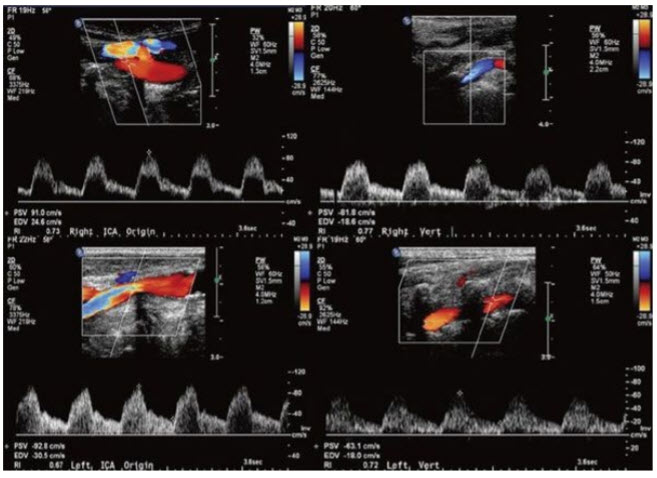Question 46#
A 70-year-old man is admitted to the telemetry unit for workup of dizziness of 2 days’ duration. He denies chest pain or shortness of breath. His heart rate is 60 bpm and blood pressure is 130/50 mmHg. On physical examination, a systolic murmur is heard over the left sternal border. Carotid duplex ultrasound is performed demonstrating the spectral waveforms of the bilateral internal carotid and vertebral arteries illustrated in Figure below.

Which of the following conditions is suggested by the carotid duplex waveforms?
A. Pulmonary valve stenosisB. Systolic heart failure
C. Pericardial tamponade
D. Aortic valve stenosis
E. Mitral regurgitation
Correct Answer is D
Comment:
Aortic valve stenosis. The waveforms in the bilateral internal carotid and vertebral arteries have a Tardus-Parvus morphology. They have a blunted and slow upstroke, suggesting more proximal or central narrowing. In this patient, these findings along with a systolic murmur are suggestive of aortic valve stenosis.